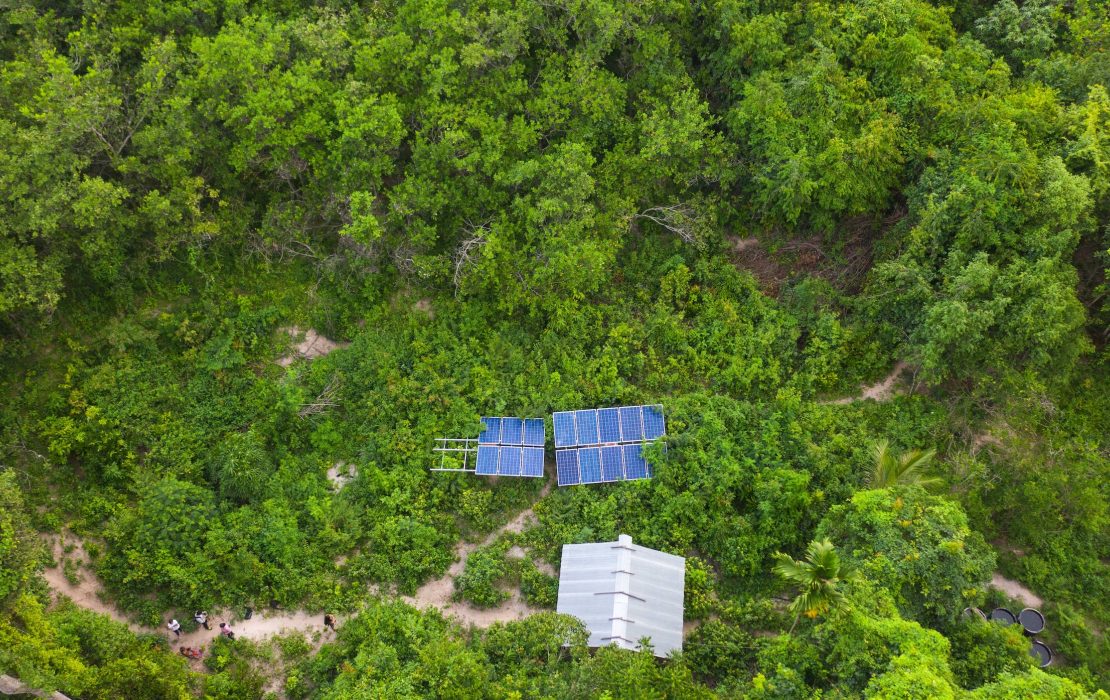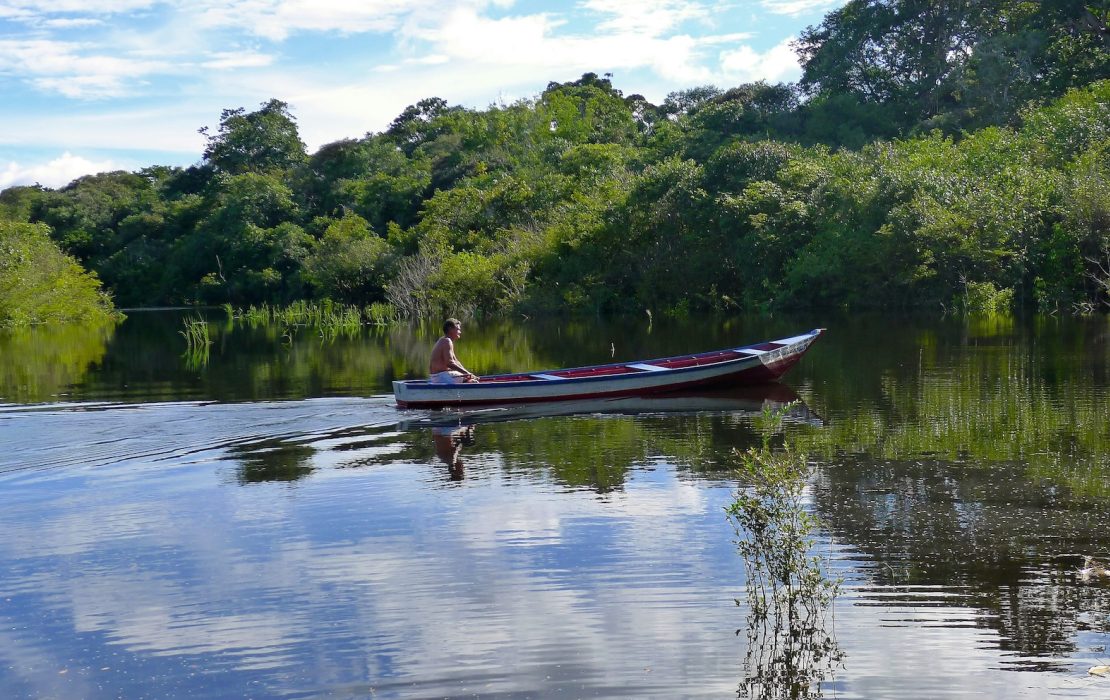
The main objective of the Paris Agreement is to hold the increase in the global average temperature rise to well below 2°C above pre-industrial levels, while pursuing efforts to limit this temperature increase to 1.5°C, in order to significantly reduce the risks and impacts of climate change.
To achieve this, the Paris Agreement outlines a number of tasks for the Parties that have signed on. First, global peaking of greenhouse gas (GHG) emissions must happen as soon as possible, with deep and rapid reductions thereafter in accordance with the best available science. Second, countries must achieve a balance between human-caused GHG emissions by sources and removals by sinks of those GHGs in the second half of the century. In plain English, that means getting to global net zero by 2050.
To this end, Article 4.19 of the Paris Agreement points out that it is necessary for countries to prepare and submit long-term climate strategies that carry through to mid-century or 2050 to the Secretariat of the UN Framework Convention on Climate Change (UNFCCC). These documents sometimes go by other names, including “Low emission development strategies”, or may be shortened as LTS or as LT-LEDS in climate circles.

Why do Long-term Climate Strategies matter? What benefits do they offer?
Long-term Climate Strategies (LTS) are fundamental for many reasons.
They can help evaluate and demonstrate socio-economic benefits. For example, Chile’s LTS showed that moving towards carbon neutrality by 2050 could lead to direct economic savings of more than US$267 billion, just considering energy targets. Such evaluations help decision makers to justify climate-friendly public policies, including those with strong social benefits, such as improved health outcomes, expanded energy access, job security, and enhanced resilience.
They can help strengthen and guide NDCs. An LTS provides a long-term vision that gives coherence and direction to shorter-term national climate pledges like Nationally Determined Contributions, or NDCs. The LTS allows a country to link short-term development planning (including its NDC) to its long-term objectives, providing a framework for policy development.
They help prevent fossil fuel-intensive investments. When a country articulates its LTS, it facilitates discussions on climate ambition and possible policy responses. This might include emphasis on preventing investments in fossil fuel-intensive systems that delay or obstruct the transition to low-carbon alternatives – which would put the country’s climate efforts in danger and potentially causing higher costs for transition to a low-carbon economy.
They send clear economic signals. LTS give early and predictable market signals to investors around technological trends and long-term growth plans. In turn, a country is able to make more efficient decisions without regret around public and private investments and guide public discussion on ways to achieve low-carbon development.
They can facilitate a just transition. When a country has a clear plan for becoming sustainable, it has to consider the needs of all people who might be most affected, including those who are already struggling. This is called a "just transition" and it helps make sure no one is left behind. LTS can provide clear guidance on how to manage the transition in a fair and inclusive manner.
They can facilitate climate financing. LTS allow countries a chance to adequately plan budgeting mechanisms to finance de-carbonized development pathways. This includes facilitating access to international climate financing, which is growing increasingly important.
They can facilitate institutional strengthening. The cross-cutting nature of LTS requires public policies and fiscal incentives to be well-aligned, with buy-in from key ministries. Therefore, long-term climate planning encourages coordination between sectors and at all levels of government to develop, incentivize, implement, and monitor key climate actions.
Is the world doing enough on Long-term Climate Strategies?
As of March 2023, 58 LTS have been presented, encompassing 64 countries. The countries that have communicated LTS account for more than 68 percent of total global emissions in 2019, 83 percent of the world’s GDP, 47 percent of the world’s population, and around 69 percent of the world’s total energy consumption.
This is a good start, but more can be done. At last year’s COP27 in Egypt, countries who have not yet done so were urged to communicate their LTS by COP28, which is set to take place in Dubai, United Arab Emirates, from 30 November 2023.

Which countries or regions are leading the way on Long-Term Climate Strategies?
As of March 2023, the region with most LTS submissions is Europe and Central Asia, with 27 countries plus the European Union. Asia Pacific has submitted 14, and Latin America and the Caribbean and Africa have each submitted 7. In North America, both Canada and the US have submitted their LTS as well.
According to the Climate Action Tracker, one of the most reputable platforms for monitoring the commitments of the countries to comply with the Paris Agreement, Chile, Colombia, and Costa Rica have some of the best designed LTS worldwide for reducing global carbon dioxide and other GHG emissions to net zero by 2050.
The LTS of Chile covers all sectors and gases and, notably, underpins its sector-specific ambitions with detailed emissions pathway analysis and budgets. This includes plans for reducing GHG emissions with sustainable industry, the development and use of green hydrogen, electromobility, sustainable construction, retirement of coal-fired power plants, energy efficiency, and increasing CO2 sequestration from forests.
In the case of Colombia, its LTS presents a series of transformation options, called "Bets". These bets revolve around knowledge and climate governance, the comprehensive management of biodiversity, sustainable production and consumption, the just transition of the workforce, sustainable rural development, comprehensive urban development, the diversified and clean energy matrix, sustainable mobility and infrastructure and to increase the adaptive capacity of the population and the health system.
Meanwhile, Costa Rica’s LTS identifies priorities for action and cross-cutting measures to make decarbonization possible. These are linked to the transformation of public transport and the agricultural sector, the electrification of the economy based on renewable energy, the development of structural reform for a new national institutionality that will lay the foundations for a new system of sustainable consumption and production; and a green tax reform to promote actions towards sustainable development and growth without emissions, thereby reducing the negative externalities that deteriorate the natural capital.
Elsewhere, Moldova's updated Low Emission Development Strategy (LEDS) for 2030 serves as a framework for achieving GHG emission reduction objectives outlined in the updated NDC submitted to the UNFCCC in 2020. The LEDS aims to reduce GHG emissions by 70 percent unconditionally and 88 percent conditionally compared to 1990. The program includes sector-specific objectives and outlines key actions for various sectors, such as energy efficiency, renewable energy sources, and efficient waste management. The LEDS also assesses progress in achieving GHG emission reduction targets set for 2020 on a sectoral basis, providing valuable information for revising targets and planning additional policies and measures.
Another standout is the LTS of the Republic of the Marshall Islands, also called Tile Til Eo - 2050 Climate Strategy "Lighting the way." The document has economy-wide targets to reduce GHG emissions: (i) to at least 32% below 2010 levels by 2025; (ii) to at least 45% below 2010 levels by 2030; (iii) by at least 58% below 2010 levels by 2035; and (iv) net zero GHG emissions by 2050 at the latest. Further, the Marshall Islands provides a good example of NDC and LTS alignment – the NDC contains targets that are explicitly consistent with milestones in the LTS. Further, the NDC proposes a 5-year cycle between LTS reviews and revisions that is in alignment with the periodic review cycles of other components of the Paris Agreement.
Does UNDP work with countries on their Long-Term Climate Strategies?
Yes.
UNDP’s Climate Promise has been supporting the development of LT-LEDS across the globe, including responding to the NDC Partnership’s latest thematic support offering. To date, Climate Promise has supported the updating of 111 more ambitious NDCs and 19 LTS worldwide.
For example, in the Latin American region, in addition to having supported the updating of 23 more ambitious NDCs, a key work area has been to support the development and implementation of LTS in countries, including Chile, Colombia and Costa Rica. UNDP also works on joint initiatives with other partners, and through networks such as the LEDS LAC Platform, to promote, design, and support implementation of LTS.
Drawing on circular economy consultations that took place in 2020, UNDP also supported Lao PDR to complete a Long-Term Low Carbon Development Strategy that identified key policy interventions that can form a legal framework to facilitate and guide the implementation of both the LTS and the enhanced NDC. Kenya was supported to develop an economy-wide LTS that built upon the updated NDC and which set out the priority actions to achieve net zero by 2050 that were announced by the President of Kenya during a world leaders’ summit at COP26. In the case of Zimbabwe, UNDP helped the government assess how green jobs could be generated from the policies and actions described in the NDC and LTS – both of which were also supported by UNDP.
Editor's Note: If you found this piece useful, sign up for our monthly climate newsletter to get more explainers and climate news delivered directly to your inbox.

